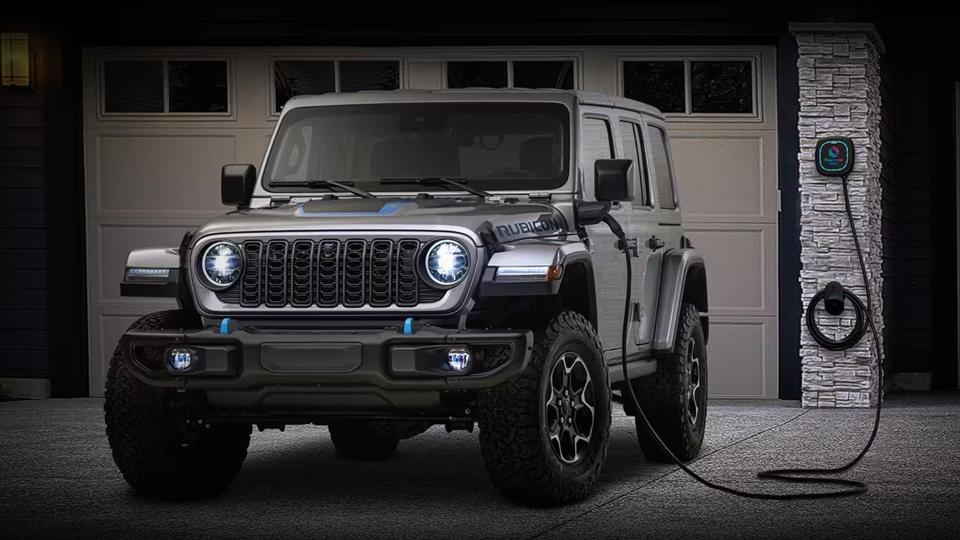EPA’s New Rule Mandates Big Emissions Cuts, but Doesn’t Eliminate Gas Cars

The U.S. federal government has finalized new emissions regulations that will apply to cars, light trucks, and medium-duty vehicles starting with the 2027 model year. The idea is to get more hybrid and electric cars on the road to reduce pollution and improve public health. It's also being pitched as an incentive for the American auto industry to prioritize environmentally friendly innovation.
Here are the two primary sources on the subject for your perusal:
The actual regulation itself: Final Rule: Multi-Pollutant Emissions Standards for Model Years 2027 and Later Light-Duty and Medium-Duty Vehicles
The official release from the EPA: Biden-Harris Administration finalizes strongest-ever pollution standards for cars that position U.S. companies and workers to lead the clean vehicle future, protect public health, address the climate crisis, save drivers money
The EPA says that the rule "applies to passenger cars, light-duty trucks, and medium-duty vehicles for model years 2027 through 2032 and beyond." That essentially covers all the common models we all buy and drive. The definition of passenger cars is obvious; "light-duty trucks" refers to pickups and some SUVs; "medium-duty vehicles" are larger trucks with a GVWR of 8,501 to 14,000 pounds (things like Ford Super Duty, Ram 2500s, and Chevy 2500s).
Here are some more specifics on intended benefits:
"Compared to the existing MY 2026 standards, the final MY 2032 standards represent a nearly 50% reduction in projected fleet average GHG emissions levels for light-duty vehicles and 44% reductions for medium-duty vehicles. In addition, the standards are expected to reduce emissions of health-harming fine particulate matter from gasoline-powered vehicles by over 95%."
Environmental Protection Agency (EPA)
If the proposed regulations are allowed to bear out in the market, average passenger car green house gases will decrease from 139 grams of CO2 per mile in 2027 to just 73 over a matter of six years.
The United Auto Workers union also issued a statement in response to the EPA release:
“The EPA has made significant progress on its final greenhouse gas emissions rule for light-duty vehicles. By taking seriously the concerns of workers and communities, the EPA has come a long way to create a more feasible emissions rule that protects workers building ICE vehicles, while providing a path forward for automakers to implement the full range of automotive technologies to reduce emissions.”
United Automobile Workers
SEMA, the association that advocates for aftermarket parts purveyors (it stands for Specialty Equipment Market Association), is staunchly opposed to pretty much any regulations that curtail emissions. No surprise there—stricter emissions rules make cars harder to modify and shrink the market for exhaust and internal combustion engine upgrades. But, it shared a press release that lays out the practical implications in a way that's a lot easier to understand than the EPA's 1,181-page document linked above.
SEMA presents the changes between the EPA's proposed rule and the final rule announced today with the context of "regulations bad," but its table, which I've embedded below, is still the best way to compare the two that I've found:
EPA Proposed Rule | EPA Adopted Rule |
|---|---|
As you can see, the new rules will indeed mandate car companies reduce the emissions of their offerings starting soon. But it's also been walked back significantly from its original form, particularly over the policy's first three years.
Whether you're for or against these rules comes down to what you're more interested in: Trying to keep cars cheaper, or trying to make the air cleaner. The EPA includes a great deal of data and details making its case for the latter. I'll pull some out for you here:
"In 2023, mobile sources accounted for approximately 54 percent of anthropogenic NOX emissions, 5 percent of anthropogenic direct PM2.5 emissions, and 23 percent of anthropogenic volatile organic compound (VOC) emissions nationwide. Light- and medium-duty vehicles accounted for approximately 23 percent, 20 percent, and 52 percent of 2023 mobile source NOX, PM2.5, and VOC emissions, respectively."
Environmental Protection Agency (EPA)
Here's another one I'm compelled to share wholesale:
"The transportation sector is the largest U.S. source of GHG emissions, representing 29 percent of total GHG emissions. Within the transportation sector, light-duty vehicles are the largest contributor, at 58 percent, and thus comprise 16.5 percent of total U.S. GHG emissions, 10 even before considering the contribution of medium-duty Class 2b and 3 vehicles which are also included under this rule."
Environmental Protection Agency (EPA)
The EPA's ruling also gets into the successes of previous similar regulations and dives deeply into specifics about how our current pollution level is detrimental to people's health. But you get it, right—breathing smog is bad for you.
The EPA has shared the announcement speech on what we've discussed here, from EPA Administrator Michael Regan and National Climate Advisor Ali Zaidi, on YouTube:
https://www.youtube.com/watch?v=2cUL93yH6XM
Got tips? Send 'em to tips@thedrive.com

 Yahoo Autos
Yahoo Autos 